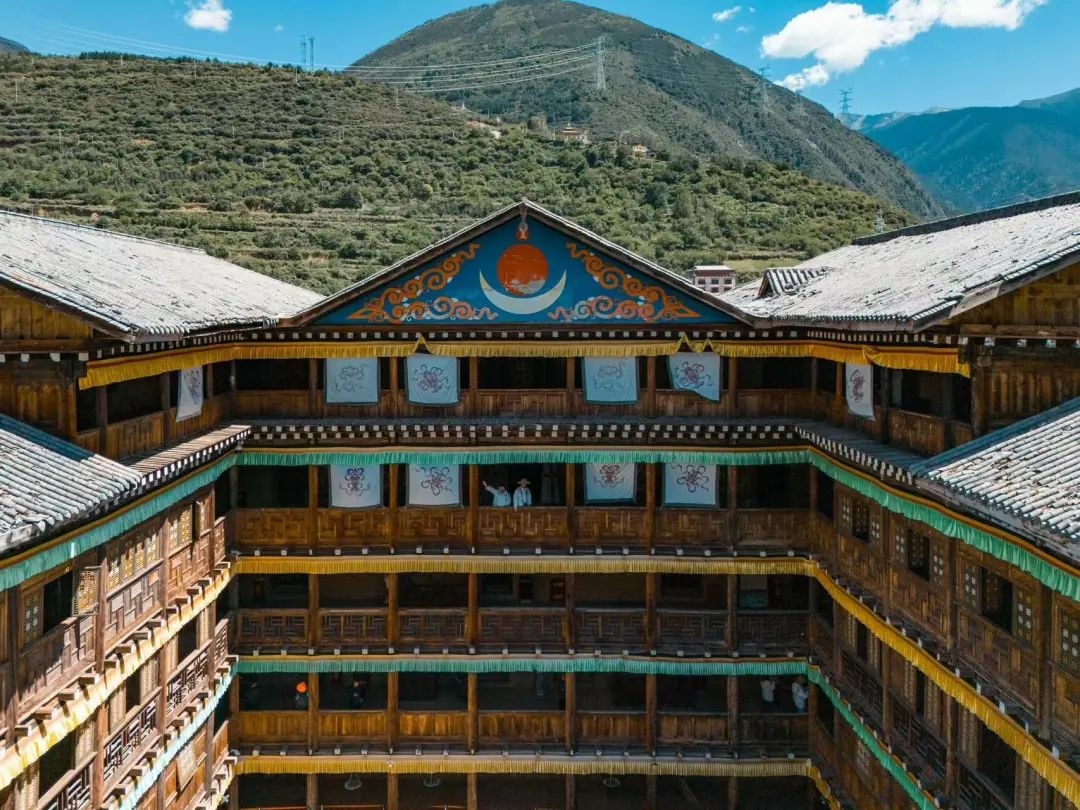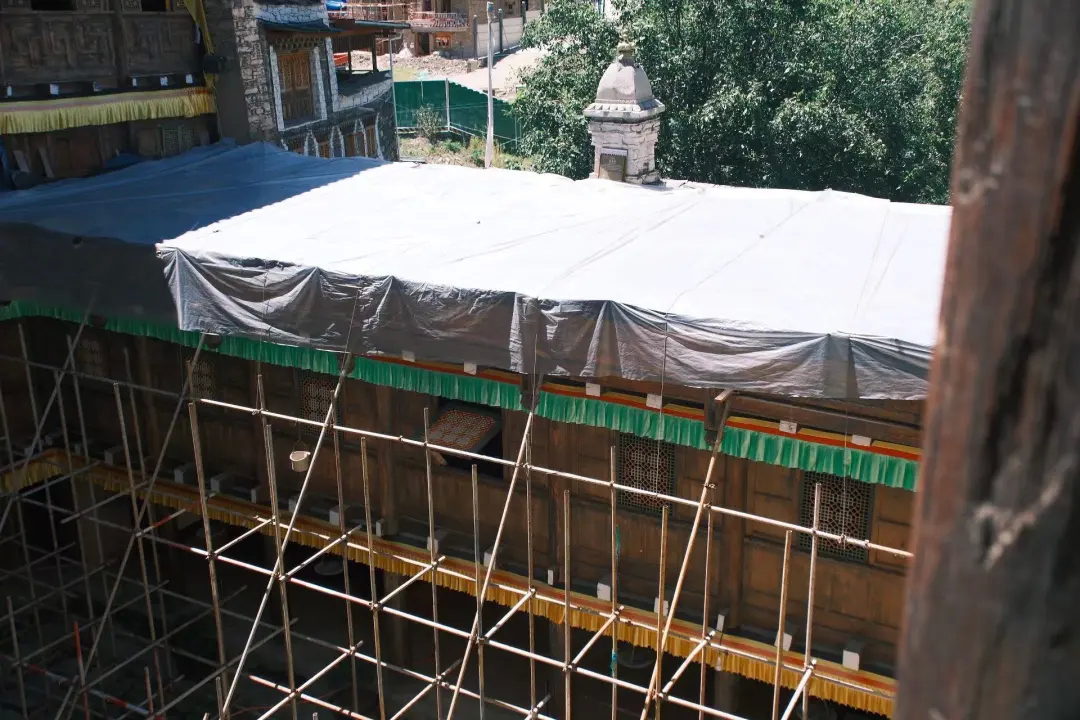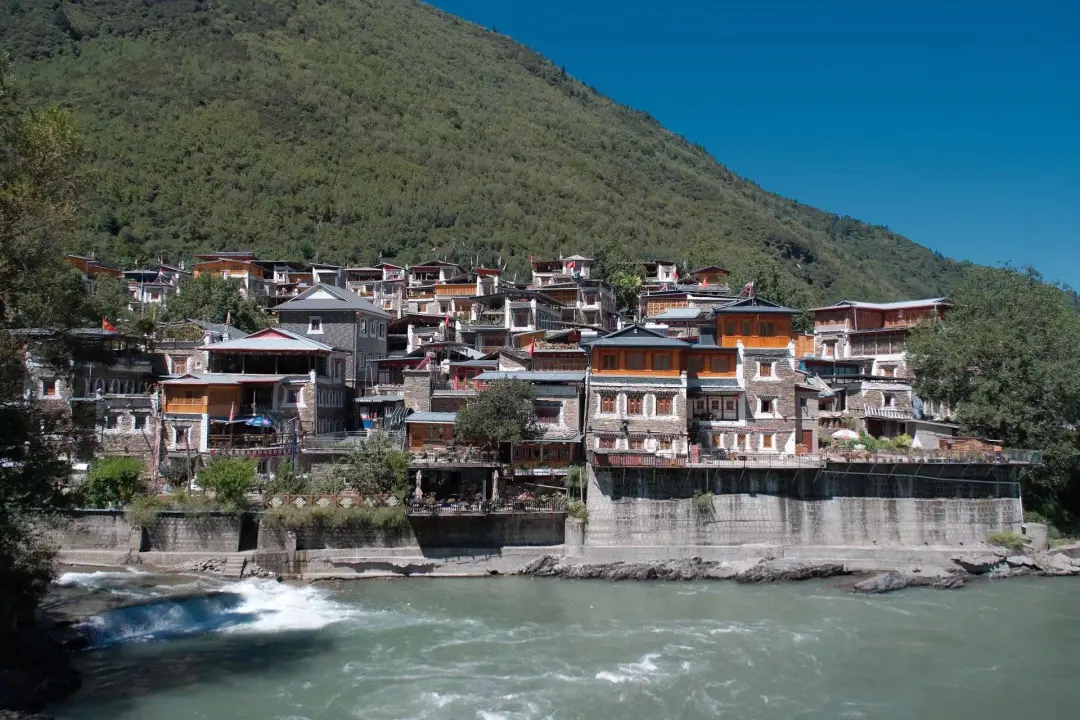11
2024.10
Zhuokeji Official Chieftain Village, often referred to as “the jewel of Oriental architecture,” is a significant cultural relics protection unit at the national level. This grand structure is impressive in scale and boasts an exquisite design.
It serves as the residence of Zhuokeji’s Tusi chieftain, one of the four prominent Tusi chieftains in Ma’erkang in Aba Tibetan and Qiang Autonomous Region, southwest China’s Sichuan Province. Deeply influenced by Han culture from a young age, Suo Guanying, regarded as China’s last Tusi chieftain, rebuilt the village in 1936, blending both Tibetan and Han architectural elements.

Zhuokeji Official Chiefstan Village
The village consists of five floors. The ground floor serves as storage and living quarters for housekeepers, while the second floor primarily houses guest rooms for Han merchants. The third level is designated for the Tusi chieftain and his family to reside, whereas the fourth and fifth floors serve as Buddhist halls, where monks are invited by the chieftain’s family to offer continuous prayers, day and night.
The persistent heavy rainfall in Sichuan during June and July has caused water leakage from the building's roofs, making urgent restoration work necessary. According to the official website, the structure features a traditional Tibetan flat roof supported by dense beams, along with a suspended mountain-style roof crafted from triangular wooden trusses in the Chinese tradition. While it can withstand some rain erosion, intense downpours may damage the roof's surface.
 The roof restoration work is in progress
The roof restoration work is in progress
Zhaxi Yanmuchu, a staff member, said that skilled artisans from Tibetan regions such as Qinghai and Ganzi are essential for the roof restoration. Furthermore, the restoration projects must undergo a review by the State Council's cultural relics protection department to guarantee that the repairs are scientifically sound and preserve the original historical integrity.
Across the water from Zhuokeji Official Chieftain Village lies Xisuo Village. Presently, the area is primarily inhabited by descendants of former workers, merchants, artisans, and craftspeople who worked for the Tusi chieftain. In 2003, the local government of Aba undertook the restoration of residential program, and after 2008, they adopted a business model that transformed these residences into homestays.
 Xisuo Village
Xisuo Village
Zhaxi remarked that the local tourism sector has faced significant challenges since the onset of the COVID-19 pandemic. Xisuo Village has begun incorporating intangible heritage to rejuvenate the local cultural tourism landscape.
Saburo Rolwoo was raised in Xisuo. After spending eight years as an apprentice in Regong, Qinghai, he returned to Ma’erkang and established the Maerkang Suolang Thangka Studio in Xisuo, subsequently transforming it into a provincial intangible cultural heritage experience hub.
The studio seamlessly merges Thangka techniques with elements of “red gene” and local customs, fostering both tradition and innovative expression in line with contemporary changes. “The Red Army’s Long March in Aba” stands as Aba's inaugural red Thangka artwork. It primarily depicts the Red Army's interactions with local residents during their Long March. Additionally, with the support of the Aba State Administration of Culture and Tourism, the studio has also produced the monumental Thangka masterpiece titled “Giant Panda 100 Pictures Long Volume.”
 Thangka art piece Aba Tells the Story of the Giant Panda to the World
Thangka art piece Aba Tells the Story of the Giant Panda to the World
The creations of Suolang Thangka Studio have garnered acclaim both domestically and internationally. Zabo, an apprentice at the studio, mentioned that their artworks are predominantly sold to coastal areas including Zhejiang, Jiangsu, and Taiwan. In 2021, Saburo Rolwoo took Thangka abroad, launching a sales platform for Thangka in Boston which facilitated sales of Thangka artworks to over 10 states across the United States.
As a non-hereditary custodian of Thangka, Saburo Rolwu is actively seeking apprentices to breathe new life into this ancient art form. Having dedicated seven years to the studio, Zabo believes that while talent is valuable, the most crucial qualities for mastering Thangka are diligence, commitment, and a willingness to learn.
文字、排版、图片|陈一凡

2023.08.14 13:45
05
2025.09
05
2025.09
09
2025.06
 28:32
28:32
2025.06.19 08:55